Is Portland’s Homeless Problem Undermining its Potential?





 Email to a friend
Permalink
Email to a friend
Permalink
Thursday, March 05, 2015
Annie Ellison, GoLocalPDX Reporter
Pastor Steve Trujillo can tell the difference between the people sleeping on Portland’s streets who are locals, and the people who are moving through.
He calls them “the travelers.”
Trujillo, who serves as the public safety chair for the Portland Downtown Neighborhood Association and has been working with the city’s homeless population since 1991, applauds the public services available to unhoused people.
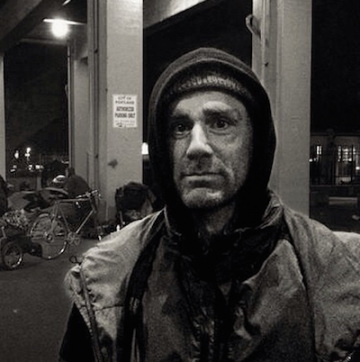
Photo: Jim Hair via Flickr
But he said it’s those very services, Oregon’s
wide-ranging free speech law, and high tourist traffic that attract a vagrant population that is undermining the city’s expanding business and tourism industries.
“It’s not the homeless of Portland that are causing problems, the bad behavior that drives away the business and tourists--it’s the travelers,” Trujillo said. “They tend to pick the cities that are lenient.”
In 2004, the city of Portland launched a 10-year plan to end homelessness. When 2014 came around, the number of people in Multnomah County who were sleeping outside, in a vehicle, an abandoned building, or transitional housing had increased to 4,441, according to the most recent numbers from the Federal Department of Housing and Urban Development.
The recent approach taken by officials from multiple agencies in Multnomah County has been a comprehensive, “housing first” strategy intertwining law enforcement, social services, and mental health and medical services, called A Home For Everyone (HFE).
“Are we being successful, or are we being so generous we’re attracting a lot of homeless people from outside the city?” Trujillo asks. “If you provide a good thing, people will come.”
Multnomah County spokesperson David Austin said the HFE strategy is an improvement from the 10-year plan.
Sidewalks and Free Speech
One thing that makes Portland, and Oregon, less hostile than other states for unhoused people is the state’s robust free speech law. Under the provisions of Article I, Section 8 of the Oregon Constitution, a person can be on the sidewalk so long as he or she is three feet from the curb.
The state mandates how sidewalks are used, not cities, meaning a change in law must come from the state legislature. Portland has no laws governing behaviors like panhandling.
According to the Portland Housing Bureau’s Matt Grumm, no plans are in the works to implement legislation, such as an aggressive panhandling ordinance, which have been implemented by other West Coast cities.
“It’s your right to speak and be there,” Grumm said.
According to Travel Portland, tourists spent $4.6 billion in the city in 2014. They come to see the bridges, the bike scene, and Powell’s City of Books, and it’s good news for the economy.
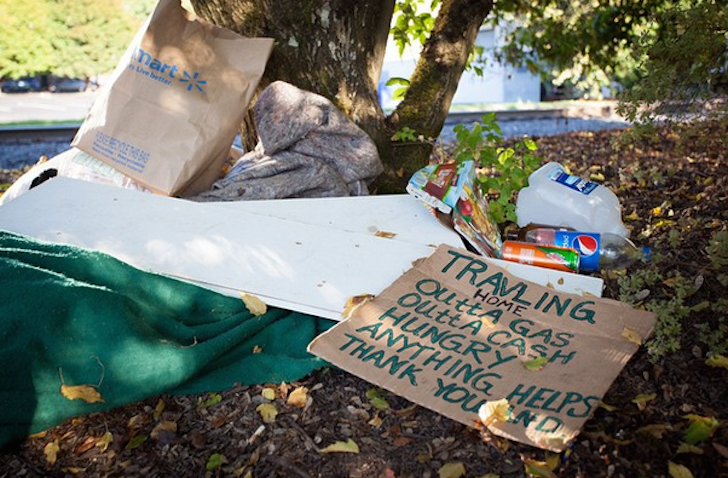
Photo: digitalstorytyler via Instagram
Travel Portland’s Marcus Hibden said the organization could not comment on the effect the city’s homeless population has had on tourism. Tourists flock to line up outside Voodoo Donuts in the city’s Old Town district, the hub of Portland’s homeless services.
“Every once in a while we might hear something,” Hibden said. “Everyone has a different comfort level when it comes to those issues.”
Doug Sera, a former downtown hotel worker, said he regularly interacted with homeless people and police regarding public urination, drug use and sleeping on hotel property.
“We've had guests say they wouldn't be back to Portland because of the homeless problem,” he wrote in a Facebook post.
Trujillo remembers the owner of a dress store at SW 3rd and Stark who eventually took her business from the area because of people--largely travelers--sleeping in the doorway.
“She had an issue with them staying next door with pitbulls, keeping people from coming in,” he said.
A person can sit within three feet of the curb, in the “furniture zone” of the sidewalk, and legally cannot be forced to move. Numerous attempts to enact a “sit-lie” ordinance have been struck down or expired.
“Portland is an easy target for travelers because people are generous and the rules are lenient,” Trujillo said.
Locals vs. Travelers
With services located in Old Town, and near central Southeast Portland’s Martin Luther King Jr. Boulevard, and St. Francis Parish, the majority of Portland’s unhoused people do not go far from the area.
Encampments in Central Southeast, near the Hawthorne and Morrison Bridges are growing, according to advocates, as the weather warms. The encampments affect where customers decide to park their cars, which affects nearby businesses, said Michael Fournier, a homeless advocate who operates Film the Police.
Of three people found dead near the Willamette River’s East Bank last week, two were homeless. The third, Francisco Marcelo Flores, 61, also died of drowning, though his living situation was unknown, according to the Multnomah County Sheriff’s Dept.
Jamee Riebhoff, 26, who died of a medical event, was found on the East Bank’s esplanade March 26. Robert Allen Hannick, 48, was first spotted in the river under a drain pipe the same day.
“My first thought was ‘I bet he climbed in the pipe looking for shelter’” said Fournier. “Because of police pressure, people can’t secure shelter.”
HFE is currently outlining a strategy for the next decade, while the first of a three-pronged Homeless Bill of Rights, which would guarantee the right to sleep on sidewalks, has been introduced in the Oregon legislature.
Related Slideshow: 20 Wealthiest and Poorest Communities in Oregon
GoLocalPDX looked at the most recent data from the census bureau's American Community Survey to compare the median household income of cities in Oregon. We used that data to rank the richest and poorest cities.

Prev
Next
20 Richest Communities
Portland
Median Income: $52,657
Population: 594,687
Job growth in Portland is up 2.9 percent, making it the 5th top U.S. for job growth, according to a study by Forbes
* Data is compiled from the U.S. Census Bureau's American Community Survey 2009-2013
_(desD0054b)_400_400_90.jpg)
Prev
Next
19.
Bend
Median Household Income: $53,027
Population: 78,128
Despite a housing bubble that devastated the local economy, Bend has been recovering. In 2013, Bend’s economy grew faster than Portland’s, according to economic report by the State of Oregon.
Photo Credit: Gary Halvorson via Wikimedia Commons (image cropped)
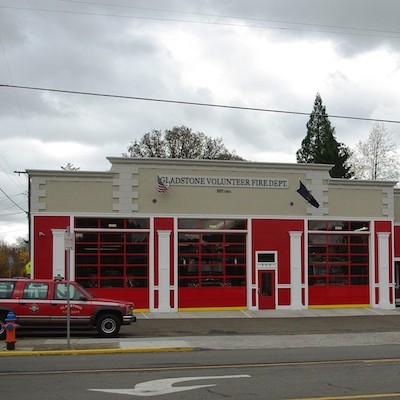
Prev
Next
18.
Gladstone
Median Household Income: $54,353
Population: 11,602
Gladstone sits 8 miles south of downtown Portland, between I-205 and 99E. The city’s economic development goals include the redevelopment of its downtown, which will include new housing, expanded shopping and restaurants.
Photo Credit: M.O. Stevens via Wikimedia Commons (image cropped)
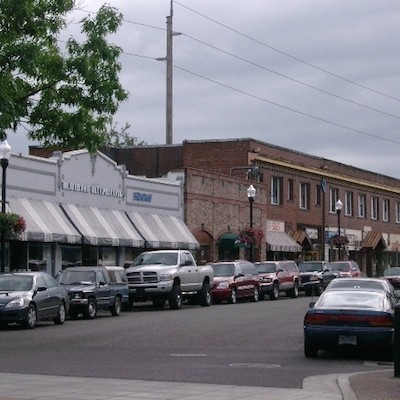
Prev
Next
17.
Beaverton
Median Household Income: $56,107
Population: 91,383
Beaverton is the 6th largest city in the state. It was ranked one of the “100 most desirable places to live in the US” by Money Magazine. Job and economic growth in Beaverton and other Washington County suburbs has traditionally outpaced growth in Portland.
Photo Credit: Ajbenj via Wikimedia Commons (image cropped)
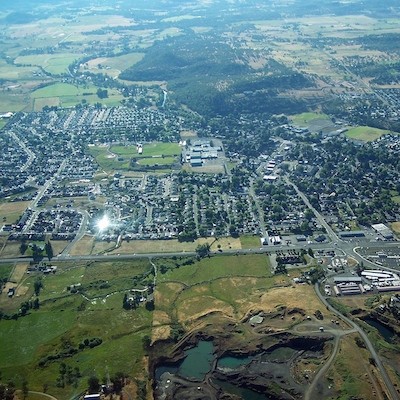
Prev
Next
16.
Eagle Point
Median Household Income: $56,309
Population: 8,520
The small Jackson County town is located just northeast of Medford. One of the town’s largest features is the Robert Trent Jones Jr., designed Eagle Point Golf Course. “The course is an 18-hole, par 72 with four sets of tees and a championship length of 7,099 yards." Golf Digest ranks Eagle Point as the sixth best publicly accessible course in the State of Oregon,” according to the city’s website.
Photo Credit: By Little Mountain 5 via Wikimedia Commons (image cropped)
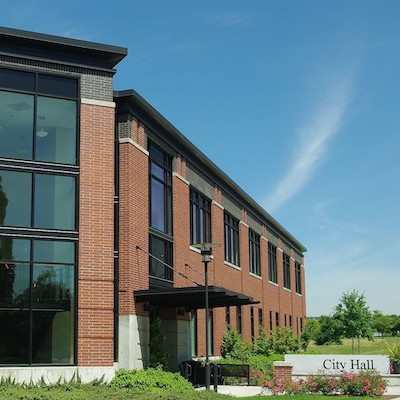
Prev
Next
15.
Wilsonville
Median Household Income: $56,430
Population: 19,636
Wilsonville, at the southern edge of the Portland Metro urban growth boundary, has consistently been one of Oregon’s ten fastest growing communities. The town’s population had grown by 97 and 39 percent according to the 2000 and 2010 census, respectively. The largest demographic group in the town are people aged 20 to 39.
Photo Credit: By M.O. Stevens via Wikimedia Commons (image cropped)
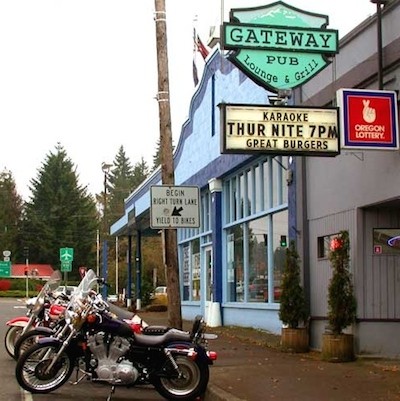
Prev
Next
14.
Sandy
Median Household Income: $57,012
Population: 9,737
Sandy, the gateway to Mt. Hood, sits along the river for which it is named. From its past as a timber town, Sandy grew as a destination for outdoor adventurers, recently adding a new high school.
Photo Credit: Decumanus via Wikimedia Commons (image cropped)
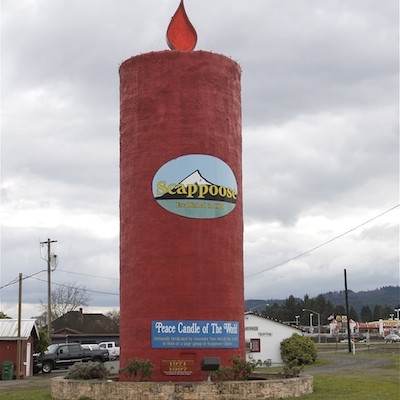
Prev
Next
13.
Scappoose
Median Household Income: $57,239
Population: 6,716
Scappoose, roughly halfway between Portland and St. Helen’s, is still home to a gravel mine, shoe factory and Oregon Aero, although many residents now commute to Portland for work. The town boasts the Peace Candle of the World.
Photo Credit: Cacophony via Wikimedia Commons (image cropped)
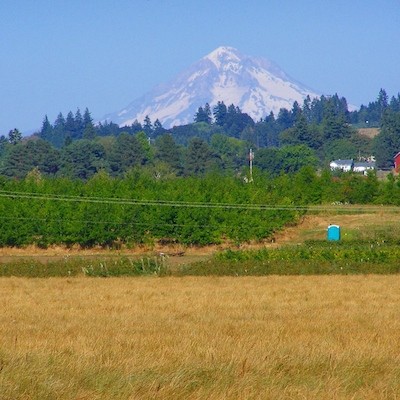
Prev
Next
12.
Canby
Median Household Income: $57,931
Population: 16,561
Just north of Salem, Canby sits in the scenic North Willamette Valley. Historically known for its farming, Canby’s crops include berries, asparagus, flowers, dairy products and livestock. The city even offers a 20-farm tour.
Photo Credit: Public Domain via Wikimedia Commons (image cropped)
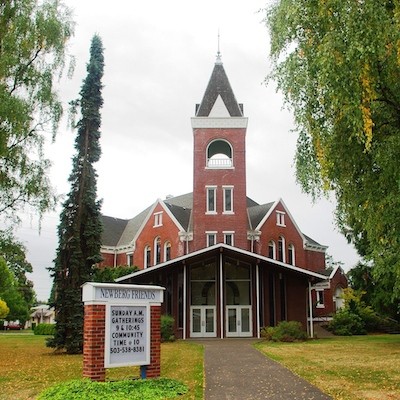
Prev
Next
11.
Newberg
Median Household Income: $59,528
Population: 22,291
Newberg’s biggest employers are spread between Christian University George Fox, dental equipment manufacturer A-dec. The city is within commuting distance of Portland.
Photo Credit: M.O. Stevens via Wikimedia Commons (image cropped)
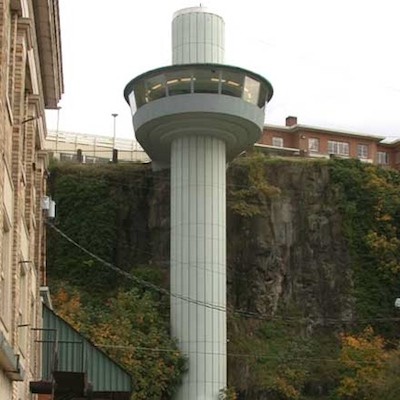
Prev
Next
10.
Oregon City
Median Household Income: $60,223
Population: 33,115
As the last stop on the Oregon Trail, Oregon City was once the hub of the Oregon Territory, chosen for its position at the confluence of the Willamette and Clackamas Rivers, near Willamette Falls Lock. The timber industry played a major role in the town, with several mills operating nearby in recent decades. With the fall of the lumber, Oregon City has become home primarily to light manufacturing and tech, with roughly a 30 minute commute to Portland.
Photo Credit: By Decumanus via Wikimedia Commons (image cropped)
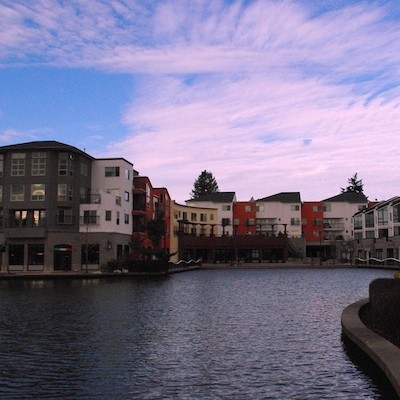
Prev
Next
9.
Tualatin
Median Household Income: $61,250
Population: 26,383
The economic powerhouse of the commuter suburb south of Portland is arguably the upscale Bridgeport Village Mall, which opened in 2005. The mall's 18-screen movie theatre, restaurants and shops drive thousands to the area, conveniently located on I-5.
Photo Credit: Aboutmovies via Wikimedia Commons(image cropped)
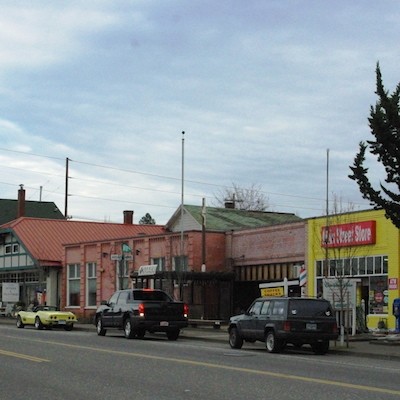
Prev
Next
8.
Tigard
Median Household Income: $61,758
Population: 49,024
Another commuter suburb, but larger than neighboring Tualatin, Tigard lays claim to the Washington Square Mall and a portion of the Bridgeport Village Mall. The city sits roughly a 15-minute drive from Portland (depending on traffic). A handful of companies, such as Gerber and Stash Teas, have their headquarters here.
Photo Credit: M.O. Stevens via Wikimedia Commons (image cropped)
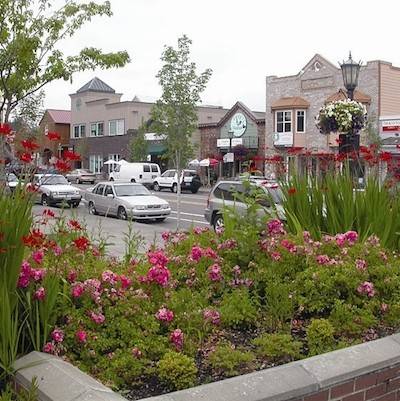
Prev
Next
7.
Troutdale
Median Household Income: $62,326
Population: 16,188
Mount Hood was given its name by a member of Captain George Vancouver's expedition in what is now Troutdale, in 1792. The town is roughly 20 minutes from Portland, towards the Columbia River Gorge. Troutdale had one of the state's first female Mayors.
Photo Credit: West Columbia Gorge Chamber of Commerce via Wikimedia Commons (image cropped)
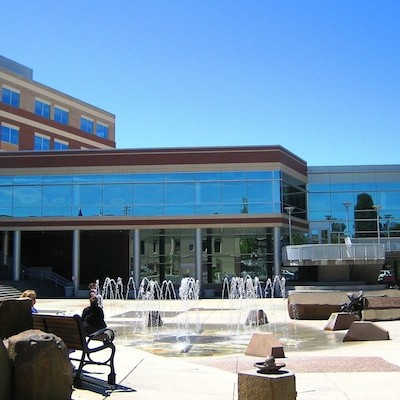
Prev
Next
6.
Hillsboro
Median Household Income: $65,158
Population: 93,880
Hillsboro, just west of Portland, is home to tech giant Intel, and serves as a commuter suburb for Nike employees in neighboring Beaverton.
Photo Credit: Public Domain via Wikimedia Commons
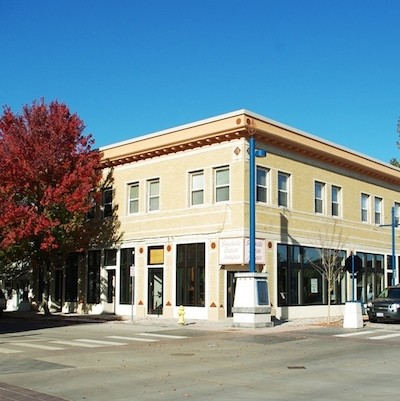
Prev
Next
5.
Sherwood
Median Household Income: $78,355
Population: 18,441
South of Portland, Sherwood was home to a brickyard for nearly one hundred years until it closed in the 1970s. The economy shifted to include a fruit and vegetable cannery, and leather tanning.
Photo Credit: Public Domain via Wikimedia Commons (image cropped)
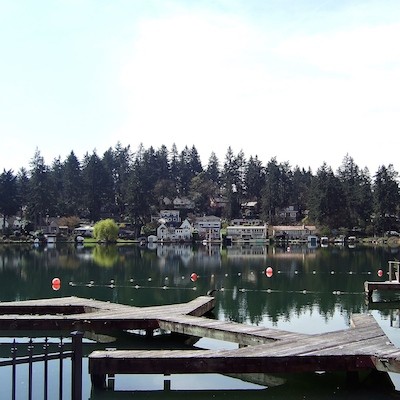
Prev
Next
4.
Lake Oswego
Median Household Income: $83,625
Population: 37,037
The town has long had the reputation as one of the Metro areas’ wealthiest communities. The city has the state’s top high school, according to GoLocalPDX’s 2013 rankings.
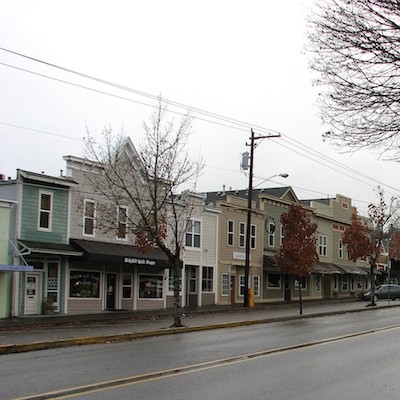
Prev
Next
3.
West Linn
Median Household Income: $84,519
Population: 25,462
The semi-rural bedroom community of Portland directly across from Oregon City has been home to a number of Trailblazers. Steve Blake, Nate McMillian, Brandon Roy and Monty Williams have all lived there.
Photo Credit: Ulmanor via Wikimedia Commons (image cropped)
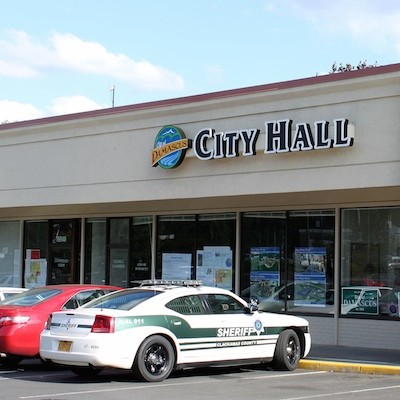
Prev
Next
2.
Damascus
Median Household Income: $89,077
Population: 10,626
This rural area on the eastern edge of the metro area has had a contentious past. The city was formed out of an incorporated area, in part, to fight off Metro’s plans to develop the area. Since that time, the area has struggled to build consensus around a landuse plan required by state law of all municipalities. In Nov. a movement to disincorporate the city failed just a few votes.
Photo Credit: Tedder via Wikimedia Commons (image cropped)
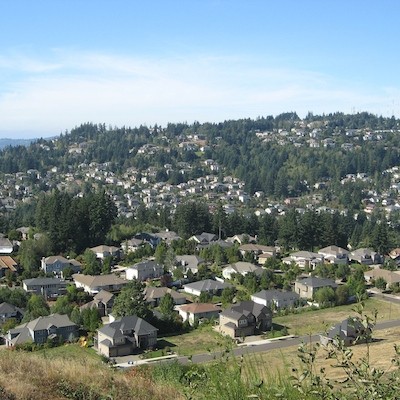
Prev
Next
1. Happy Valley
Happy Valley
Median Household Income: $92,773
Population: 14,931
The city off I-205 just east of the Willamette National Cemetery is the state’s wealthiest town, according to the U.S. Census. Happy Valley's median household income has only grown by 3.78 percent since 2000. The income growth rate is lower than Oregon’s average rate of 22.29 percent, according to USA.com
Photo Credit: Esprqii via Wikimedia Commons (image cropped)
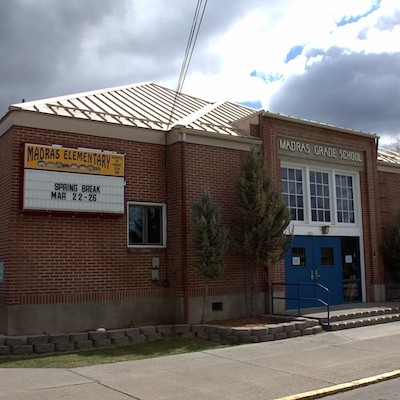
Prev
Next
20 Poorest Communities
Madras
Median Household Income: $38,934
Population: 6,263
Madras, in central Oregon's Jefferson County, sits just to the east side of Mt. Hood. The economy hinges on agriculture, and several airports, including a heliport. The actor River Phoenix was born in Madras.
Photo Credit: Tedder via Wikimedia Commons (image cropped)
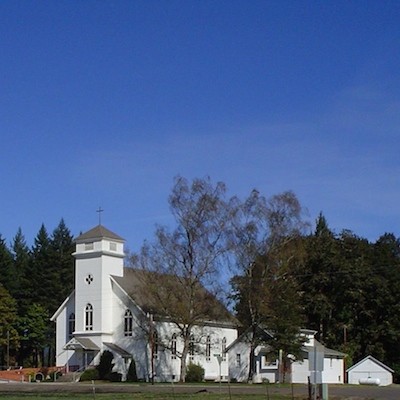
Prev
Next
19.
Stayton
Median Household Income: $38,536
Population: 7,690
Just 14 miles southeast of the state capitol, Stayton provides an easy commute to Salem. The region's industries include agriculture and manufacturing. To the Northeast, Silver Falls State Park, the largest state park in Oregon, is a major tourist draw.
Photo Credit: Public Domain via Wikimedia Commons (image cropped)
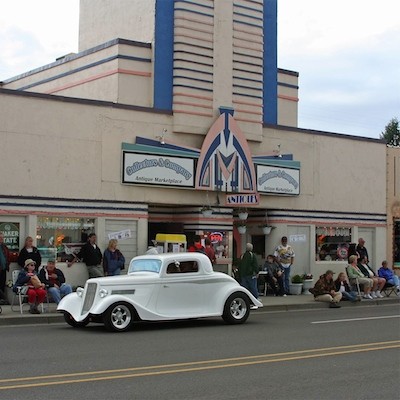
Prev
Next
18.
Junction City
Median Household Income: $37,377
Population: 5,505
The Lane County city drew media buzz in 2003 when a group of men posed nude for a calendar to raise money for the local school in the face of budget cuts.The town's initial intention of being the junction between the state's east and west railway lines was never realized. Junction City is home to a range of dairy and Christmas tree farms.
Photo Credit: Bruce Fingerhood via Wikimedia Commons (image cropped)
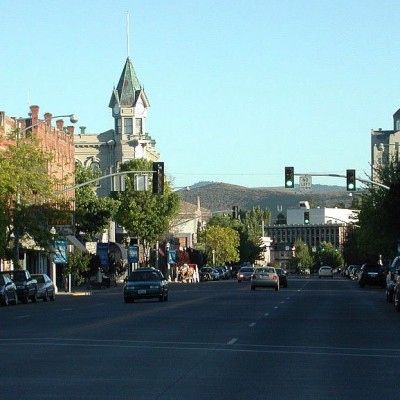
Prev
Next
17.
Baker City
Median Household Income: $37,243
Population: 9,774
Baker City is the county seat of Baker County, in far eastern Oregon. Its unemployment rate is 20 percent. The City's motto is "On the Historic Oregon Trail."
Photo Credit: Finetooth via Wikimedia Commons (image cropped)
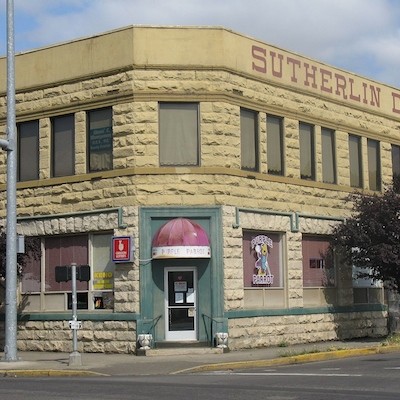
Prev
Next
16.
Sutherlin
Median Household Income: $36,532
Population: 7,766
Between Roseburg and Eugene, Sutherlin's unemployment rate is more than three percent higher than the national average, at 9.9. Sutherlin is near the Copper Creek Reservoir, and the Umpqua Golf Resort.
Photo Credit: Publichall via Wikimedia Commons (image cropped)
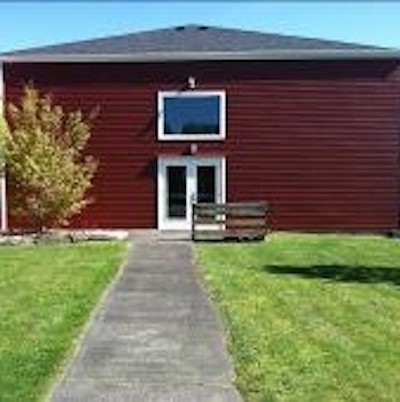
Prev
Next
15.
Warrenton
Median Household Income: $36,266
Population: 5,057
Ten minutes from nearby Astoria, Warrenton has two charter fishing boat ports. The city was originally built on tidal flats.
Photo Credit: City of Warrenton Website (image cropped)
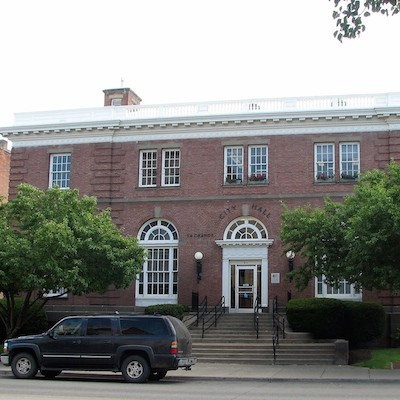
Prev
Next
14.
La Grande
Median Household Income: $35,860
Population: 13,114
La Grande is the county seat of Union County, south of Pendleton in eastern Oregon. Goldmines brought settlers to the region in the 1800s, but it is now the home of Eastern Oregon University.
Photo Credit: Ian Poellet (User:Werewombat) via Wikimedia Commons (image cropped)

Prev
Next
13.
Coos Bay
Median Household Income: $34,870
Population: 15,982
Coos Bay is the largest city on the Oregon Coast. Its economy relies on tourism, lumber, agriculture and small businesses. However, a plan to build a multi-billion dollar liquefied natural gas terminal at nearby Jordan Cove is in early stages of development.
Photo Credit: Debbie Tegtmeier via Wikimedia Commons (image cropped)
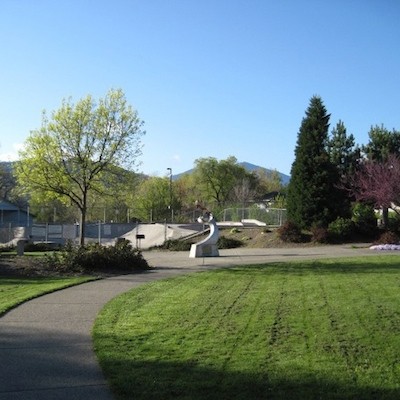
Prev
Next
12.
Talent
Median Household Income: $34,797
Population: 6,123
Sitting in the southern region of Jackson County, Talent is roughly five miles from the college town of Ashland, which is known for its Shakespeare festival. Homeowners pay their taxes to Jackson County, not to the city of Talent.
Photo Credit: Talent Oregon Parks and Recreation (image cropped)
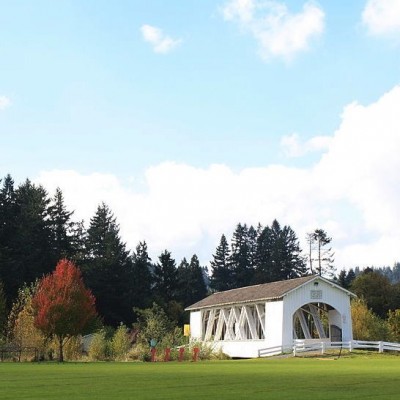
Prev
Next
11.
Sweet Home
Median Household Income: $34,443
Population: 9,000
Scenic Sweet Home is known as the "gateway to the Santiam playground," a pass in the Cascade Mountains. Howevever, 25 percent of people in Sweet Home were below the poverty line at the time of the last census.
Photo Credit: Sword Fern via Wikimedia Commons (image cropped)
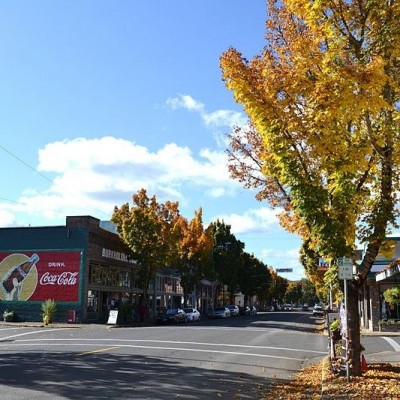
Prev
Next
10.
Cottage Grove
Median Household Income: $34,325
Population: 9,734
Cottage Grove is the third largest city in Lane County and sits just south of Eugene. The city is nationally known as the "Covered Bridge Capital of Oregon."
Photo Credit: Visitor7 via Wikimedia Commons (image cropped)
_400_400_90.jpg)
Prev
Next
9.
Lincoln City
Median Household Income: $33,808
Population: 7,968
In Northwest Oregon, Lincoln city is one of the state's hot spots for coastal tourism. The city is known for its outlet mall and Chinook Winds Casino.
Photo Credit: Justin Lonas via Wikimedia Commons(image cropped)
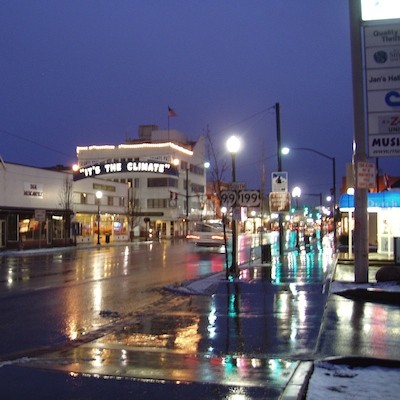
Prev
Next
8.
Grants Pass
Median Household Income: $33,165
Population: 34,672
The city is the county seat of Josephine County in Southern Oregon. Grants Pass was known for its strong timber trade, but now tourism is one of its biggest economic draws. Its location on the Rogue River helps bring vistors from around the state.
Photo Credit: Nicolas from Paris, France via Wikimedia Commons (image cropped)
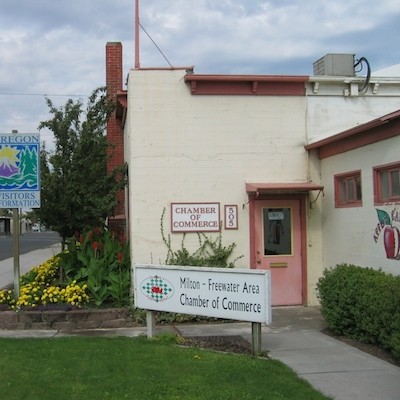
Prev
Next
7.
Milton-Freewater
Median Household Income: $33,086
Population: 7,066
In the far corner of northeastern Oregon, Milton Freewater is part of the Walla Walla Valley, and is well known for its agriculture.
Photo Credit: Bobjgalindo via Wikimedia Commons (image cropped)
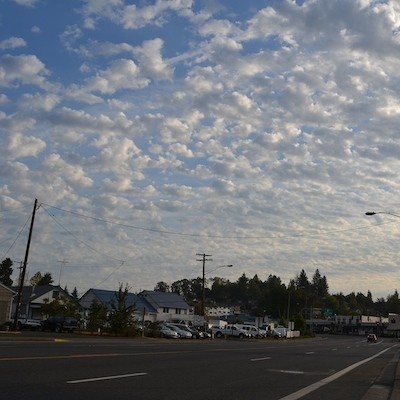
Prev
Next
6.
Winston
Median Household Income: $32,232
Population: 5,359
Winston is located in the southern part of Douglas County. Its biggest tourist attraction is the wildlife park WildLife Safari, which attracts around 150,000 people every year.
Photo Credit: Visitor7 via Wikimedia Commons (image cropped)
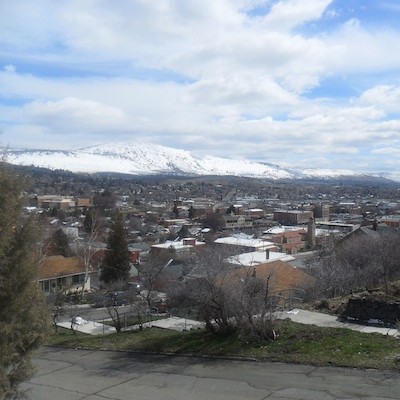
Prev
Next
5.
Klamath Falls
Median Household Income: $31,990
Population: 2,1026
The southern Oregon city will host the 2015 Babe Ruth World Series at the historical Kiger Stadium.
Photo Credit: Bobjgalindo via Wikimedia Commons (image cropped)
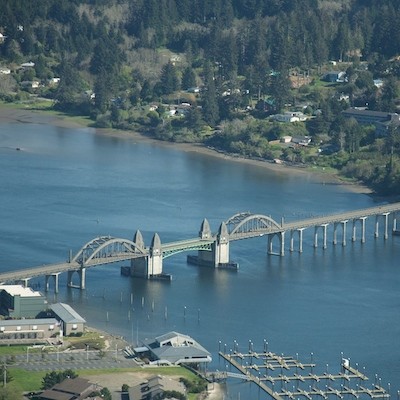
Prev
Next
4.
Florence
Median Household Income: $31,812
Population: 8,463
The costal city Florence hosts the Rhododendron Festival, the second-oldest flower festival in Oregon and third-oldest on the West Coast, which brings tourists from all over the state.
Photo Credit: Sam Beebe via Wikimedia Commons (image cropped)
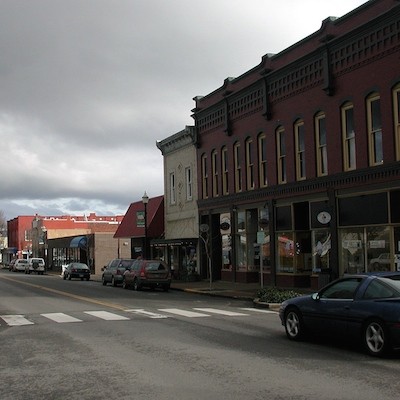
Prev
Next
3.
Monmouth
Median Household Income: $31,582
Population: 9,687
Set off Highway 99 just south of Salem, Monmouth is home to Western Oregon University. The university serves many first-generation students and has received national recognition for its achievements in helping students.
Photo Credit: ABy Finetooth via Wikimedia Commons via Wikimedia Commons(image cropped)
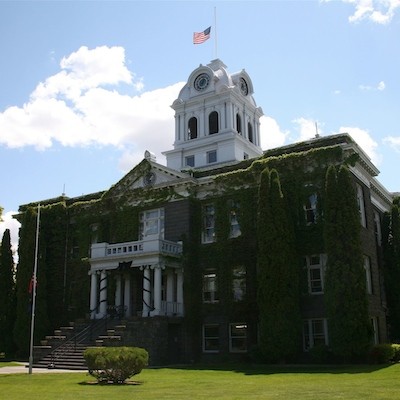
Prev
Next
2.
Prineville
Median Household Income: $29,959
Population: 9,241
Prineville is in Central Oregon, next to the Ochoco National Forest. The Prineville-Crook County Chamber of Commerce is the oldest in Central Oregon, formed in 1919. Almost half of all business in Crook County are members of the Chamber.
Photo Credit: Cacophony via Wikimedia Commons (image cropped)
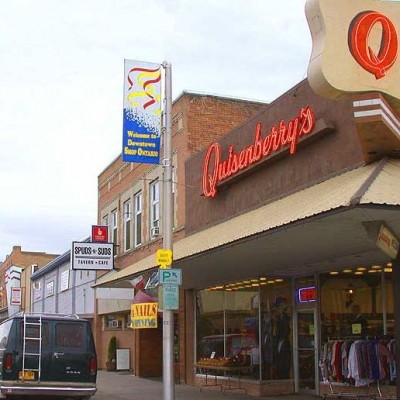
Prev
Next
1.
Ontario
Median Household Income: $25,455
Population: 11,227
Pulitzer Prize winning American children’s author and poet Phyllis McGinley, was born in Ontario, Oregon.
Photo Credit: Matthew Trump via Wikimedia Commons
Enjoy this post? Share it with others.





 Email to a friend
Permalink
Email to a friend
Permalink




_(desD0054b)_400_400_90.jpg)





























_400_400_90.jpg)









_(desD0054b)_80_80_90_c1.jpg)





























_80_80_90_c1.jpg)











Follow us on Pinterest Google + Facebook Twitter See It Read It